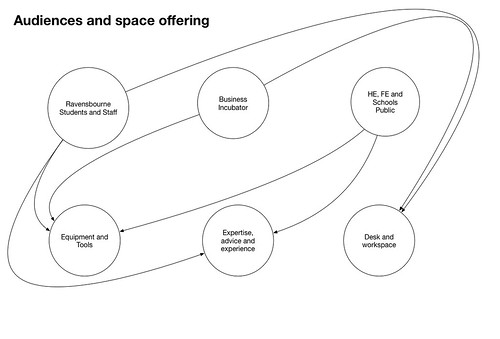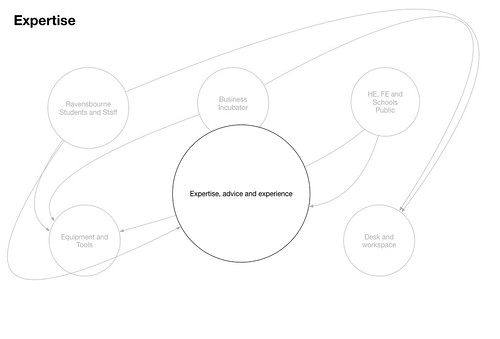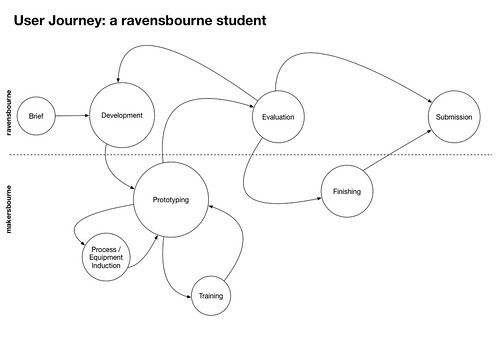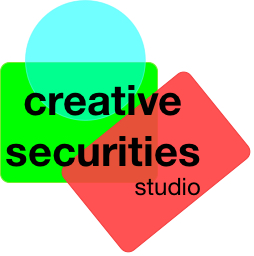The Knight Foundation and Mozilla are running a project to look at News, something which I am, obviously interested in.
They are currently setting some challenges, to try and get some new ideas going, the latest is : Beyond Comment Threads.
Back in 2008 I had a blog over at Vox.com, Nodalpoints. I posted a few ideas there about various things, and I am going to cannibalise them over the next few posts here, mostly because the original site has gone and some of the posts had some nice ideas.
The idea I am going to talk about here was the ‘Social Bar’, here is my original post on it:
Raising The Social Bar
Jan 15, 2008 2 comments
I gave a presentation on this project at the recent BarCampLondon3. More thoughts and further thinking is below.
What is it?
The Social Bar is the name for a small R&D project that I have been doing at the office. The area of research is in comments, especially on the BBC’s website but also how they work on large media type sites in general.
Where does the conversation take place. In recent years the BBC as well as a number of other large media sites have started to open up, to allow people to comment on parts of the site, started weblogs that reside on bbc.co.uk and are written by staff and talent.
The Social Bar is about the idea that this mechanism is not serving the licence fee payer well enough, that we need to take a lead in the next step to, almost step back, to what the web was about.
At its most basic it is about creating a barrier to entry, if you want to comment about something on the BBC’s website then you have to go through some processes that recently were not there. I know that this sounds wrong, especially in terms of the BBC and access for licence fee payers but there is a reason for this.
In fact these reasons can be summed up as follows:
A lot of comments on many sites are trivial. They do not add any real value to the content that is there (be it a weblog post, a news article or some other piece of editorial content on the BBC’s website).
For all the BBC’s will to be creating a space where people can say what they like it in fact can not do this. Policy gets in the way, even marketing can get in the way. What appears under the URL www.bbc.co.uk has to fit in with certain guidelines and perceptive needs.
The BBC wants to be your (the licence fee payers) trusted guide and gateway to the internet. What service can achieve that whilst trapping your thoughts on its own site?
All of this started to come together when I was given a bit of time to do some R&D in the office. I have been thinking about comments, attribution, ownership and reputation for a while and took this opportunity to try and shape some project. Initially a number of technical proposals started to take shape (I will share these online soon, more in support of this idea rather then as actual proposals to build stuff). What I started to find was that it really is not a technical problem and as such does not need a technical solution.
It is a cultural change and one that has to happen at the BBC. It is not the audience doing anything wrong (in fact there is no right or wrong about any of this, just that I believe that we need to move on from the current model quickly).
So what needs to change and why exactly?
Think about the interactions with content on the BBC’s site (I am going to assume that we are just talking about the BBC’s website but this could apply to any large site, especially media sites).
You can get in touch. Yes you can its on each of the pages on bbc.co.uk as it is part of the main page templates.
Now if you look at some parts of the BBC you will also be able to bookmark the page using services such as del.icio.us, reddit and digg. Via these tools you can also apply some tags to the content.
Some pages also allow you to leave comments. These include the blogs (go to http://www.bbc.co.uk/blogs/) as well as other parts of the site. This is on a site by site basis, for example The One Show asks for your comments, but Doctor Who does not.
How these comments work also differs across sites. There is moderation everywhere, some of the weblogs allow for post moderation of comments but otherwise everything is moderated before it is posted to the live website.
The One Show for example has what it called ‘Curated Comments’ these are heavily moderated, as many of the news comments are as well. That is appropriate, the BBC is well known for its editorial standards. Applying these standards to comments in much the same way as letters to the editor of a paper are handled and published should be acceptable in terms of the BBC’s web site.
So we have Contact, Tag and Comment. Ideally it would be great if you could Annotate as well but this seems a long time in coming so we will forget about that for the moment.
Now my contention has been that if you looked at a lot of the comments that appear on these sites they are trivial, in fact they would probably be better classified as Contact, in as much as it is the commentator wanting to get in touch with the author. To be sure there are some comments that are very good but if you looked at the cost per comment that was editorially worthwhile it would in fact look like a rather expensive way to get content onto the web.
So how about we make a few changes. First off, if you want to get in touch, then use that contact link. In fact make it more prominent and make sure that the comments get through to the correct editorial team quickly. Then make sure that team take time to respond to these contacts where appropriate.
Tags, well they are useful and it would be even more useful to get these tags on the page, a box showing how this page has been tagged by both the BBC (as an ‘official taxonomy’) and the audience (as the folksonomy).
Comments, here it would be good to have something consistent across the whole of the BBC and when you press on it, here is where I want us to do something different.
If you want to comment we should be encouraging you to do so but to do so from your own space on the web. In fact this space could as well be your Facebook profile page, your MySpace site or a weblog. It might even be a comment on some other forum or space which the person is a member of what is happening is:
They are being asked to create a space, an identity online. Attached to this identity will be their comments on the BBC comment.
Link to what they want to comment about. Something that we are loosing with all these facilities to comment right there on the page is the fact that the web was built to link. We should be linking to pages. It is how the web is supposed to work, it is how search engines work.
The BBC should be encouraging this kind of behaviour. In fact what the BBC should be doing is asking people to get involved in the conversation and guide them to the places to have these kinds of discussions. Some will be forums, others will be discussions that take place across the blogosphere on different peoples weblogs. Some parts will be posts, others in the comments there.
The BBC can guide people, we can suggest some good places to start and forewarn and forearm them about the facts of moving beyond bbc.co.uk. We could even have online courses similar to WebWise and Computer Tutor on how to start creating your space. Setting up a weblog and writing posts (this could tie in with other campaigns, literacy for example), using the likes of flickr, MySpace and Facebook and other such services to tool up people into living part of their lives online.
What we also need is for members of the BBC to feel that they can take part in the conversation that happens ‘out there’. They should feel that they can post on another weblog or forum, link where appropriate and generally post whilst representing the BBC. We can then say to our audience that we will be taking part in the conversation about our editorial content (the core of what the BBC does) and we will take part in places away from home, not on our turf.
As I mentioned before, this started as a technical project and has changed to one of wanting to change how we work on the web at the moment. There are technical things that can be built, most of them not too complex, aggregators and more tools to help point people to where the conversation is happening. It may be that the money we save in moderation costs in fact goes into more editorial work guiding people and participating in the conversation but that I do not think is a bad thing.
I think this is a fairly rich topic and is not an idea that is going to change things overnight. There are probably holes in the thinking above (should we be making things harder for people to comment, can we make sure that the producers of content do get involved in the conversations, etc.).
If you can think of reasons not to do this, or to go right ahead then please do let me know. I will post more thoughts on this shortly, including some information on the technical ideas that I thought I was originally going to build, something that might be better suited to being an independent public service publisher.
Further notes on the Social Bar
Jan 16, 2008 Post a comment
Continuing from the post on the Social Bar, I thought I would put down some details on where it comes from.
Initially I was given some time to do a bit of R&D, as a part of one of the technical teams here. I was interested in another way of dealing with comments. I wrote my initial proposal and started putting together some GreaseMonkey and Ruby prototypes as well as lots of sketches. I did eventually realise that there was not a big tech project here but a set of ideas that may or may not work. I had proposed this for Etech, but withdrew the proposal when I realised that all I was producing was in fact these ideas on how to think about comments and not anything that you could really measure.
I have been thinking about comments for a while, I built a site a while back that converted the UK Governments ID Card Consultation White Paper into a weblog, each post was a paragraph from the document and of course you could comment against each comment.
Most of the comments were not that useful and could not really inform a consultation.
More recently I am taking part in a project with the Design Against Crime initiative at Central St. Martins school of Art and Design, Bike Off is all about bike parking. The lasest research project (AHRC/EPSRC funded) is about developing standards for bike parking facilities. Part of the project is to have a public consultation on the proposed standards and we are going to evaluate a number of online and offline ways of doing this.
One of the ideas to address the comments problem was to switch off the comments. In other words we would produce a resource where it was easy to link into the document, to be able to link into the heart of the document when you wanted to write your response to the consultation. It is a model that I expect that we will still try. The point here was that you would (or at least should) get better ‘comments’ if in fact you did not want to host the comments but just make sure you had a good number of linkable too elements that needed commenting upon.
It would also help in moderation, as the amount of spam was huge. This though will be a problem everywhere for a long time.
The problem then becomes finding the conversation, which is not that hard now. You can google a URL, and use Technorati to find weblogs that link or use tags. So in fact building up a view of a conversation is not that hard, maybe navigating it in a meaningful way might take some practice but is definitely do-able.
So now we move onto the BBC. I worked on a project where we built some software that was probably overcomplicated for the task in hand and the comments that came in were not ‘that’ interesting. Or rather they probably were not worth the cost per comment (if you analyse it that way), when using a standard contact us type form on the site would have sufficed.
So how much value do most comments add to the original content? If you look across the web it just varies from site to site. Being able to comment on a friends weblog seems appropriate. The places I think it is not working is when you have comments across a site generically. The Guardians Comment Is Free is not as much of a success as I think the Guardian would have liked. Many of the BBC’s weblogs though do get valuable comments.
So in fact a generalisation such as ‘switch off comments’ is not valid it does though push forward a number of smaller ideas.
Who owns the comments?
Where does the conversation take place?
How do we find the conversation?
The answers are rather simple too, the author owns the comments, it takes place on the web (now the web can extend beyond the traditional web, mobile techologies, web on TV etc.) and finding the conversation, ok its not real time yet but you can find it using Google and Technorati and other similar tools.
The quickest thing that the BBC (and similar sites that produce large amounts of content that is ripe for comment) to do would in fact be to publicise tags along with the page/programme, well that and commit to a permanent URL for an asset (and that is something the BBC is working towards quickly, every programme will have a unique URL for it).
I did these two graphics a while back, they are linked too back in the posts here on nodalpoints but I will include them here again.
Graphics that just list the suggested tags for posts etc. Just like they do for conferences now, we could have them for the channels and the programmes and sites.
It makes it easier to find the posts that discuss the content.
Beyond this there could be spaces for other services that manage your comments in a stream so that you can retain more control over them, even if they are not posted on your weblog. Maybe this is some kind of Public Service Publisher service, maybe it is something that the BBC builds.
As long as organisations get involved with initiatives like Data Portability, APML etc (and they are) then all things are possible.
There will always be projects where it is totally appropriate for comments to be right there on the site, on the page but not always and I think, the BBC at least, has a duty to start encouraging people to interact with the web away from bbc.co.uk.
This is happening in many pockets at the BBC and the Social Bar is not some initiative to be taken up by the BBC or not, this is just a floating of ideas about comments and how we interact with content online. I am using the BBC as a bit of a space to try out these ideas at the moment, but my thinking (for all its flaws) is based on experience beyond this type of site.




